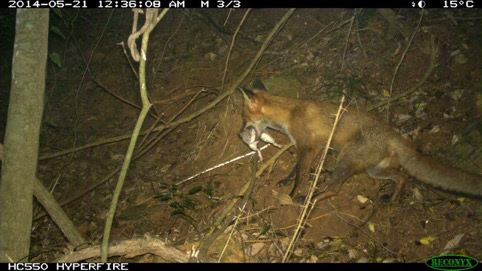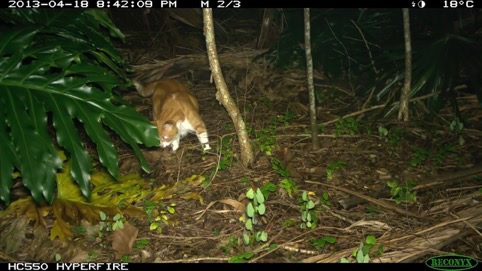Can you picture the skies full of Richmond Birdwing Butterflies again?
- Do you think you can help rescue the Richmond Birdwing from extinction?
- Could you make a tax-deductible donation now to help grow 500 of the butterfly’s host plants?


by mccgadmin

by mccgadmin
Well, this dry it has been challenging to keep our plantings from drying out. Our latest planting on the creek bank and what the Green Army did late last year and early this year is mostly doing all right.
Phil
by mccgadmin
This Sunday we have four bushcare groups meeting in various locations:
Can you spare a couple of hours to help in the restoration of these areas?
It’s not difficult work and newcomers are always made to feel very welcome.
For details, please check our Working Bee Calendar.
by mccgadmin
The MCCG has been selected as a finalist in the 2017 Queensland Community Achievement Awards and we are a part of the People’s Choice Award.
The People’s Choice is a Facebook poll – a fun way to raise awareness of the achievements and inspiring stories of all finalists.
You can read the bio for the MCCG and cast a vote by clicking here.
Or you can go directly to the poll at https://poll.fbapp.io/qldcaa17 and submit your vote.
You can only vote once per day, so make sure you share the People’s Choice Award poll with your friends and family.
The winner receives $500 from Pullenvale Ward, which is pretty handy! Plus each vote that someone makes is an entry for their chance to win a further $100.
This has been made possible only through the generosity and passion of our talented and dedicated volunteers, and the efforts of the MCCG Management Committee.
A sincere THANK YOU to all who have contributed and who continue to support the MCCG.

To view more details about this year’s awards, please click here.
by mccgadmin
Seventy-six bright-eyed volunteers set their alarms VERY EARLY to take part in the annual MCCG Platypus Survey on Sunday 10 September.

by mccgadmin
Location: CWCN Centre – 47 Hepworth St Chapel Hill
Type: Activity for children 6-11 years
Organiser: Cubberla-Witton Catchments Network Inc
Contact: www.cwcn.org.au – www.facebook.com/cwcn.org.au
Click here to view the flyer: {module_literature,i,177046}
by mccgadmin
Location: CWCN Centre – 47 Hepworth St Chapel Hill
Type: Activity for children 6-11 years
Organiser: Cubberla-Witton Catchments Network Inc
Contact: www.cwcn.org.au – www.facebook.com/cwcn.org.au
Click here to view the flyer: {module_literature,i,177046}
by mccgadmin
Location: CWCN Centre – 47 Hepworth St Chapel Hill
Type: Activity for children 6-11 years
Organiser: Cubberla-Witton Catchments Network Inc
Contact: Contact: www.cwcn.org.au – www.facebook.com/cwcn.org.au
Click here to view the flyer: {module_literature,i,177046}
by mccgadmin
We have two WONDERFUL articles guaranteed to fascinate … They reveal the curious parenting and foraging behaviours of the Striated Pardalote.
Jim Butler’s September issue of Feather Fascination provides a very interesting read: {module_literature,i,176534}
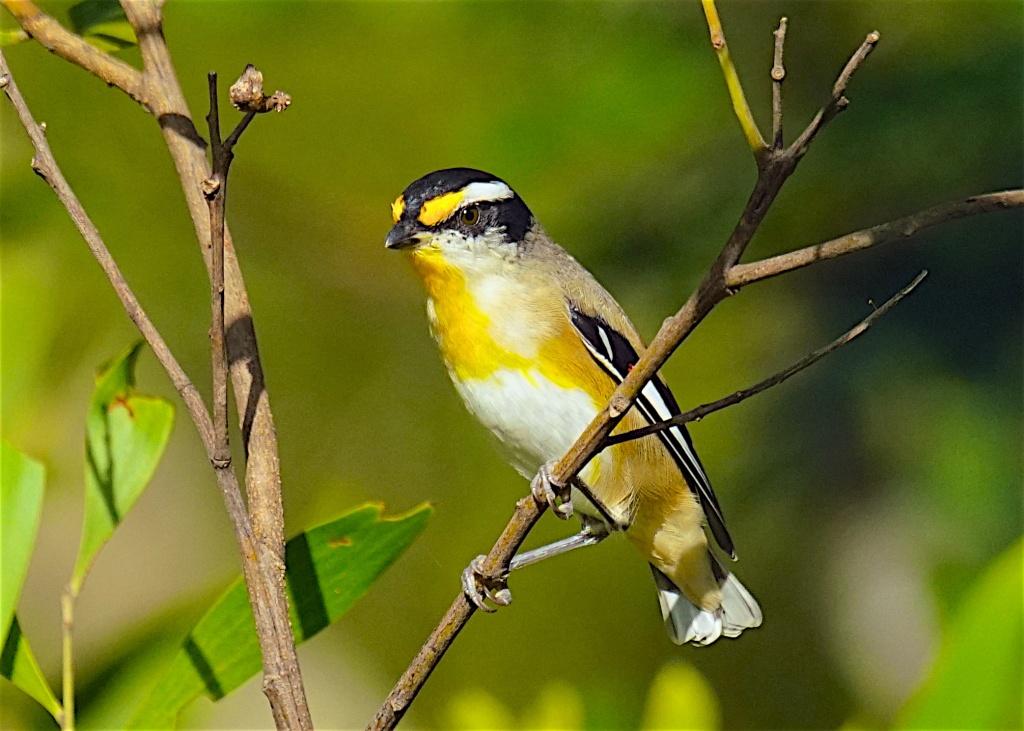
And if you’d like to see some amazing photos from Ed Frazer, together with an account of his experiences photographing two Striated Pardalotes in a tunnel on his Brookfield property … click here !
.
by mccgadmin
During the past eight years I have been using several trail cameras around our property. This has greatly expanded my appreciation of the wildlife which lives alongside us.
Over the 44 years we have been here I have regularly seen during daytime red-necked wallabies, hares and water dragons. I have occasionally seen possums, platypus, koalas and antechinus, but the cameras have revealed a whole lot more going on during the night.
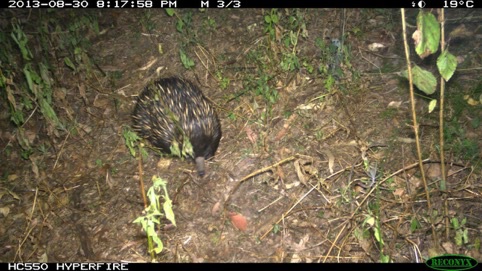
I use a number of different cameras and many of them are white and some infra-red flash. They are all triggered by infra-red. The quality of the photos has improved considerably with the most recent models taking 16 megapixel photos.
My method of viewing nightlife is to select an interesting habitat area and set a few cameras up targeting where I think the animals may have regular tracks or on branches I think might be used as perches. Transition zones between bush and open areas are another target. Every few days I swap the cards in the cameras and review them on my computer to see what I have photographed.

As most of our animals are nocturnal I have seen so much more than I expected. It is the insight into their night life that is interesting as they go about their normal behaviour without being frightened by my unexpected presence.
It is not just the animals.
I have found the regular habitat of a number of very cryptic birds that are seldom seen during the day. Shy species such as Russet-tailed thrushes, Noisy Pittas, Lewin’s Rails, Spotless Crakes and Little Grassbirds are usually well gone before they are seen during daytime.
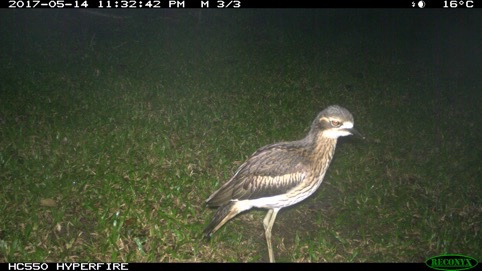
Once I have found their hangout I set up a hide and this allows me to photograph them with my good camera. I have also been able to see nocturnal birds such as Bush Stone-curlews going about the normal business instead of looking like statues as they behave during daylight.
The cameras also show me there are a lot more feral animals than I had realised. Foxes, deer, dogs, hares and cats are photographed by the trail cameras almost daily.
Here are a few more examples of the nightlife that occurs on my property:
